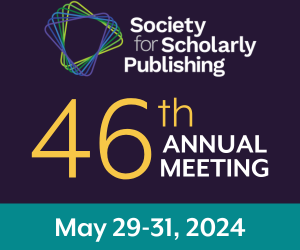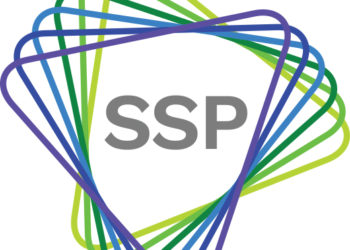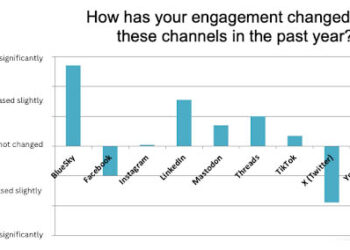
Since the founding of the UK’s Royal Society in 1660 and the launch, five years later, of its Philosophical Transactions, societies and associations have been at the forefront of scholarly communications. Fast forward 350+ years and there are an estimated 25,000 scholarly societies worldwide, serving tens of millions of members. So why do these organizations continue to grow and thrive? Who joins them, and why? How satisfied are today’s members with what scholarly associations have to offer? How involved are they in the organizations they belong to? What are the benefits of belonging to a scholarly association, and what more could these associations be doing for their members? And, critically, why do some people choose not to join a scholarly society – or fail to renew their membership?
A new survey we carried out recently at Wiley aims to help answer some of these questions. With nearly 14,000 respondents across all the disciplines in which we publish – members and non-members – it is one of the largest surveys of its kind. Respondents were pretty equally split between baby boomers (1945 – 64: 31%), Generation X (1965 – 1979: 35%), and Millennials/Generation Y (1980 – 1999: 31%) – just 3% were from the so-called Silent Generation (pre-1945). Geographically, 43% are from Europe, Middle East, & Africa (EMEA), 32% from the Americas, and 25% from Asia Pacific. Unsurprisingly, since we used our own customer lists for the survey, over 80% of respondents have completed an advanced degree, and around 60% (including students) work in a university, college, or research institution. Most (56%) have 10+ years’ experience; close to one third (32%) work in medicine or healthcare (including veterinary science), and humanities and social sciences (including psychology, business, economics, finance, and accounting) are also well represented (28%). 69% of respondents had belonged to a society in the last year, compared with 26% who had not (scarily, the remaining 5% were unsure!).
Some of the results are what you’d expect and hope for – though it’s always good to have your instincts confirmed by real data, of course! For example, without exception, members and non-members alike value the same membership benefits – access to the society’s peer-reviewed journal(s), and opportunities for continuing education and training. Over the coming months, we will be digging into more of the detail to find out whether there are any significant demographic differences, but a sneak preview of some of this more in-depth analysis reveals that, while Gen Y respondents and non-members rated CE and training the top benefit, members and respondents from other age groups ranked the journal(s) higher. Similarly, there are some interesting differences by country, with respondents from Brazil and China preferring CE and training opportunities, while those from Australia, India, the UK, and US preferred the journal.
Happily, what respondents told us about the society activities they participate in broadly confirmed their preferences – for example, 72% actively read their association’s journal(s), 58% attend the annual meeting, 30% maintain their certification through their society, and 28% attend webinars.
Even more happily, more than three quarters of members who responded (76%) are satisfied or very satisfied with the activities provided by their society or association; 38% are so-called promoters (based on the NetPromoter tool), described as, “loyal enthusiasts who will keep buying and refer others, fueling growth.”
The reasons why people join a scholarly society are also mostly predictable – top reasons included the quality of the research-based content (aka the journal(s)), the prestige of the organization in its field, a requirement to attend the conference or acquire certification, and networking. The top reason for renewing (41%) is feeling connected to the community, followed by value for money (24%). Somewhat depressingly, though, 9% of members say they’ve never thought about why they renew! As is often the case, the write-in answers paint an interesting picture, ranging from the very enthusiastic (belonging to a society is “part of my identity”; “I am devoted to the industry”) to – well, a bit less so – “Frankly, my boss at the time made it clear I should be a member. Felt it would work against me if I didn’t :(”
23% of respondents have been members of a society for 2-4 years; 20% have been members for 20+ years (though they didn’t necessarily belong to the same society for the whole period). In between, there appears to be something of a drop off – from 14% who have been members for 5-7 years, to 11% each for 8-10 and 11-15 years, and just 9% for 16-20 years.
And what about those who choose not to join at all – or who join and decide not to renew? What are their reasons and motivations? 26% of all respondents hadn’t belonged to a society in the past 12 months, and their feedback is every bit as critical. Although the cost of membership was the top reason given for not being a member of a society or association in the last 12 months (24%), one of the most surprising revelations in the survey for me was that a full 15% of non-member respondents said they haven’t joined a society because they haven’t been invited! A further 12% (each) responded that “it never occurred to me to join one” or “I don’t know what’s available in my field”, while 9% have “never had a reason to join.” That’s a staggering 46% of non-members who haven’t joined/renewed because they’re waiting to be asked or persuaded to do so! Interestingly, though, while only 3% claim that they didn’t join a society because they believe they can get the same benefits elsewhere, when asked, 64% of non-members say they are satisfied or very satisfied with the resources they use for professional activities in place of membership. These include new resources including scholarly communication networks (SCNs) such as Academia.edu, Mendeley, and ResearchGate, Google, social media, and MOOCs, as well as traditional ones such as conferences, colleagues, and journals.
This is a big survey and we will be analyzing the results for many months to come, but even at this early stage there are lessons to be learned – first and foremost about the need for more inclusive outreach activities. We need to make sure that researchers and professionals at every stage of their career know about the societies in their field, understand their value and, critically, are explicitly encouraged to join. This applies to industry organizations such as the Society for Scholarly Publishing (SSP) every bit as much as to the scholarly associations which many SSP members represent. There is also a lesson to be learned here about finding ways to continue to engage with members once their initial enthusiasm has worn off, which seems to be around the five-year mark. Success in these two vital areas should, in turn, lead to an increase in the number of promoters for your society, as opposed to ‘passives’ (“satisfied but unenthusiastic customers who are vulnerable to competitive offerings “) or, even worse, ‘detractors’ (“unhappy customers who can damage your brand and impede growth through negative word-of-mouth”).
Updated March 24 to clarify that Generation Y and Millennials are the same demographic group for the purposes of this survey
Discussion
13 Thoughts on "Tell Us What You Want, What You Really Really Want – First Results from a New Survey on Scholarly Society Membership"
To give some context first, I’m close to retirement and have been a member of the American Library Association for around 45 years. I’m curious whether any readers share my view that getting a print publication is an important factor for society membership. I’m flooded with email so that a clickable link isn’t the same as the ability to read a professional journal in a comfortable chair with a glass of wine before going to bed. No matter what people say, scanning print is easier for me than scanning digital. I’m also more likely to read an article outside my areas of general interest from accidentally encountering an interesting snippet. Finally, I want to get away from the computer screen where I’ve spent my day working and where the temptation is to scan quickly to get to the next interesting email or link.
The other advantage for the society is that the publication reminds me that I’m a member and provides a tangible benefit from having paid my membership dues. At my age, training isn’t all that important plus most ALA programs are available for free at the two main conferences whether I belong to the division or not. (I consider this a structural flaw for the health of ALA divisions and round tables.) I’ve dropped membership in several peripheral ALA divisions when the publication disappeared or went digital since the print publication was the only reason for belonging.
Thanks Bob – you’re certainly not alone in feeling this way! One of the big challenges for many societies is getting the right balance between catering for the needs of members such as you, who still prefer the print journal, and other (typically younger) members, who prefer the online version. Given the high cost of print and distribution, it’s increasingly tempting for societies to drop print in favor of using the extra revenue to develop and deliver other services for members – but, of course, they have to be careful not alienate their loyal and long-standing membership base.
Thanks very much for this, Alice. Will the survey data be made available publicly?
That 5% were unsure suggests a confusion regarding the topic of the survey. This needs to be factored into the results.
A small proportion of “unsure” is always present if you give it as an option. I suspect many of these were people thinking some permutation of:
a) “well, I’m a member of X, but does that count as a scholarly society?”;
b) “I thought I was a member of Y, but now I think about it, they haven’t asked me for money/sent me a journal/etc for years…”
For about half of my career I have been unclear on whether I was a member of my professional body thanks to point [b]. I am sure many small scholarly societies are equally inept!
Indeed Andrew. There is also the case where membership is unclear, such a subscribing to an association’s free newsletter. The point is that the percentage of respondents who are members or who are not members could each (but not both) be off by as much as 5% just because of the unsures. This is a fairly large potential error, and not the only one by any means. Surveys like this are very valuable but they should always be viewed as rough estimates.
I think Bob is being very brave in his admitting a wish to receive a print publication and I am going to join him in bravery by admitting that I love to get Learned Publishing through the post and even read it whereas I no longer look at the journal that used to be Serials. I sit at my computer all day most days and I want to sit down somewhere else and browse and even read things outside my areas of interest.
I would appreciate knowing if the Wiley survey came up with any comments on the staying power of conferences. Our Trust work told me one reason why researchers go to conference as much as they ever did (check on that). It is because a relationship of trust starts with a meeting face to face even if the relationship is carried on using social media or even just e-mail. Alice – any comments?
Anthony
Thanks Anthony. We do have some initial data on this – when asked to select all activities supported by their society or association that they had participated in the last 12 months, 58% of member respondents had attended the annual conference and 49% had attended a regional meeting. However, when they had to the one activity that was most and least appealing to them, only 7% ranked the capability to attend an in-person event(s) as most appealing. There may well be more information as we dig into the detail, including the write-in answers. I’m planning to post more as we do this additional research.
Thanks to Wiley for doing this study! Your findings on nonmembers agree with what my own organization’s surveys have been telling us for years: The responses of members and nonmembers (e.g, conference attendees) are virtually indistinguishable. For example, when asked, “Which society best meets your needs?” both name us! We’ve been puzzled why nonmembers don’t join. The “not been asked” response is an interesting finding, perhaps an area needing more exploration.
It would be great if one of the future white papers could review cross tab results. For example, I work in publishing at an engineering society, and data from surveys of our members indicate that some different membership satisfaction factors are in play for this type of audience versus the ones reported from the Wiley survey. It would be interesting to see how the responses in the Wiley survey might compare if the respondents can be subdivided in some ways.



